Overview
Nearshore application development significantly enhances SaaS success by providing:
- Cost savings
- Access to diverse talent
- Enhanced communication
- Improved operational efficiency
Leveraging skilled developers in nearby regions enables companies to reduce expenses without compromising on quality. This strategic approach fosters innovation and accelerates project delivery, which is crucial for maintaining competitiveness in the rapidly evolving software landscape. Embracing nearshore development not only positions companies advantageously but also drives sustainable growth in an increasingly competitive market.
Introduction
The landscape of software development is rapidly evolving, with companies increasingly seeking innovative ways to enhance their service offerings. Nearshore application development has emerged as a powerful strategy, promising not only cost savings but also access to a diverse talent pool and improved communication. As businesses navigate this terrain, they may ponder: what are the true benefits of adopting nearshore development for their SaaS solutions? This article explores ten compelling advantages, illustrating how nearshore application development can drive success in the competitive realm of software as a service.
SDA: Tailored Nearshore Software Development Solutions
stands at the forefront of delivering tailored solutions that meet the unique demands of various industries. By assembling a , SDA ensures that every project aligns closely with the client's strategic objectives, significantly enhancing the software's overall effectiveness. This personalized approach not only improves user experience but also propels business growth, positioning SDA as a eager to innovate in the sector.
As highlighted in the , the trend of nearshore application development is gaining momentum across industries, underscoring the necessity of in cultivating a collaborative environment that yields measurable results. Moreover, the case study on '' demonstrates how SDA taps into the skilled workforce in LATAM to boost engineering capacity, enabling clients to swiftly respond to market demands and technological advancements.
By leveraging the cost advantages associated with lower labor costs in LATAM, SaaS product owners can maintain high delivery standards while optimizing their budgets. In today's rapidly evolving landscape, embracing is essential for sustained growth and innovation.
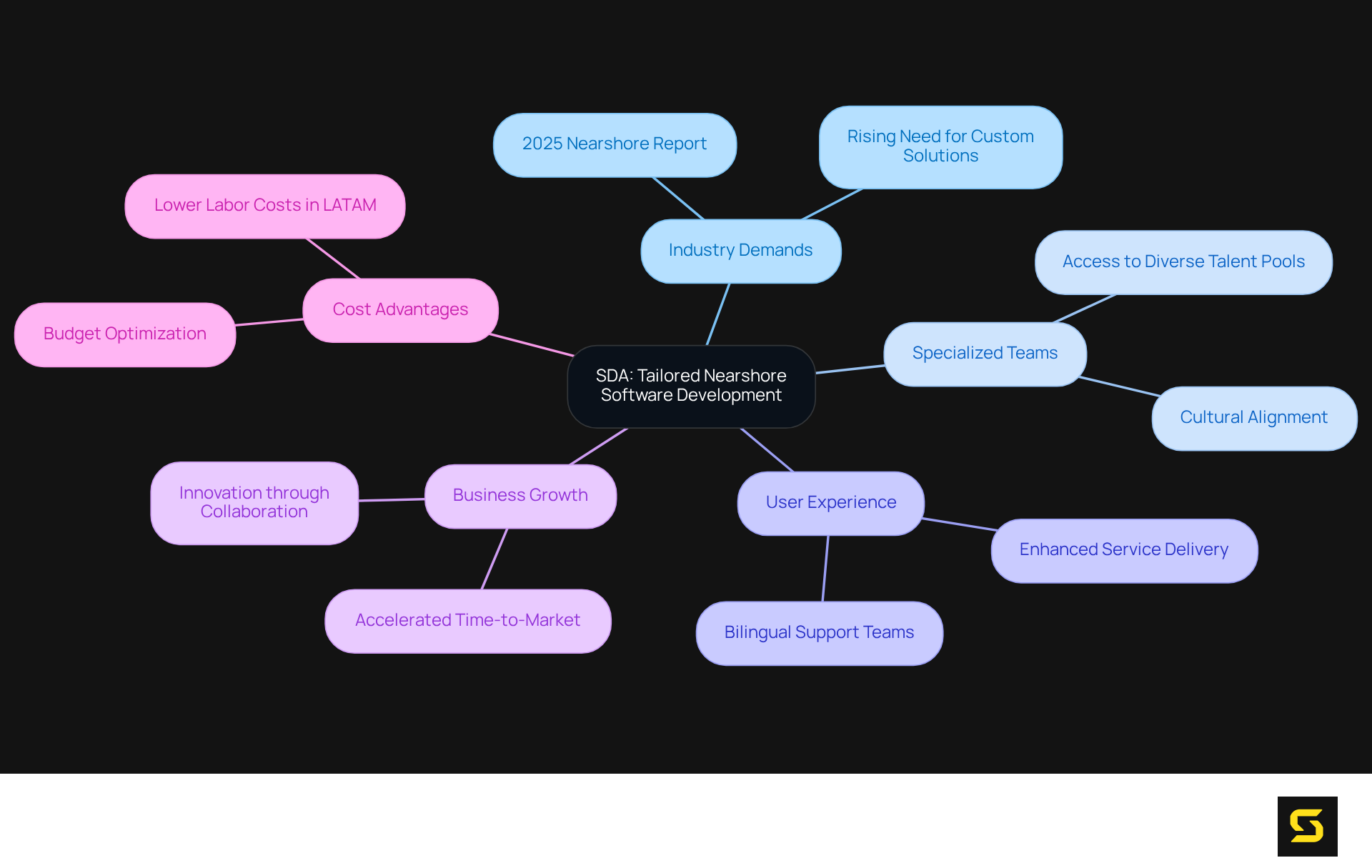
Cleveroad: Cost-Effective Nearshore Development Services
Cleveroad delivers cost-effective services that enable businesses to access without the significant expenses typically associated with onshore development. By leveraging skilled developers in nearby regions, companies can achieve , facilitating more efficient resource allocation.
For example, a senior software engineer in the U.S. commands an annual salary ranging from $120,000 to $160,000, whereas a comparable developer in Brazil or Colombia earns between $40,000 to $60,000. This stark contrast illustrates the .
Such financial flexibility not only but also fosters , which are essential for success. As organizations increasingly pursue agile and , nearshore application development emerges as a strategic choice, allowing them to maintain high delivery standards while significantly reducing expenses.
Furthermore, the promote smoother collaboration, thereby improving outcomes.
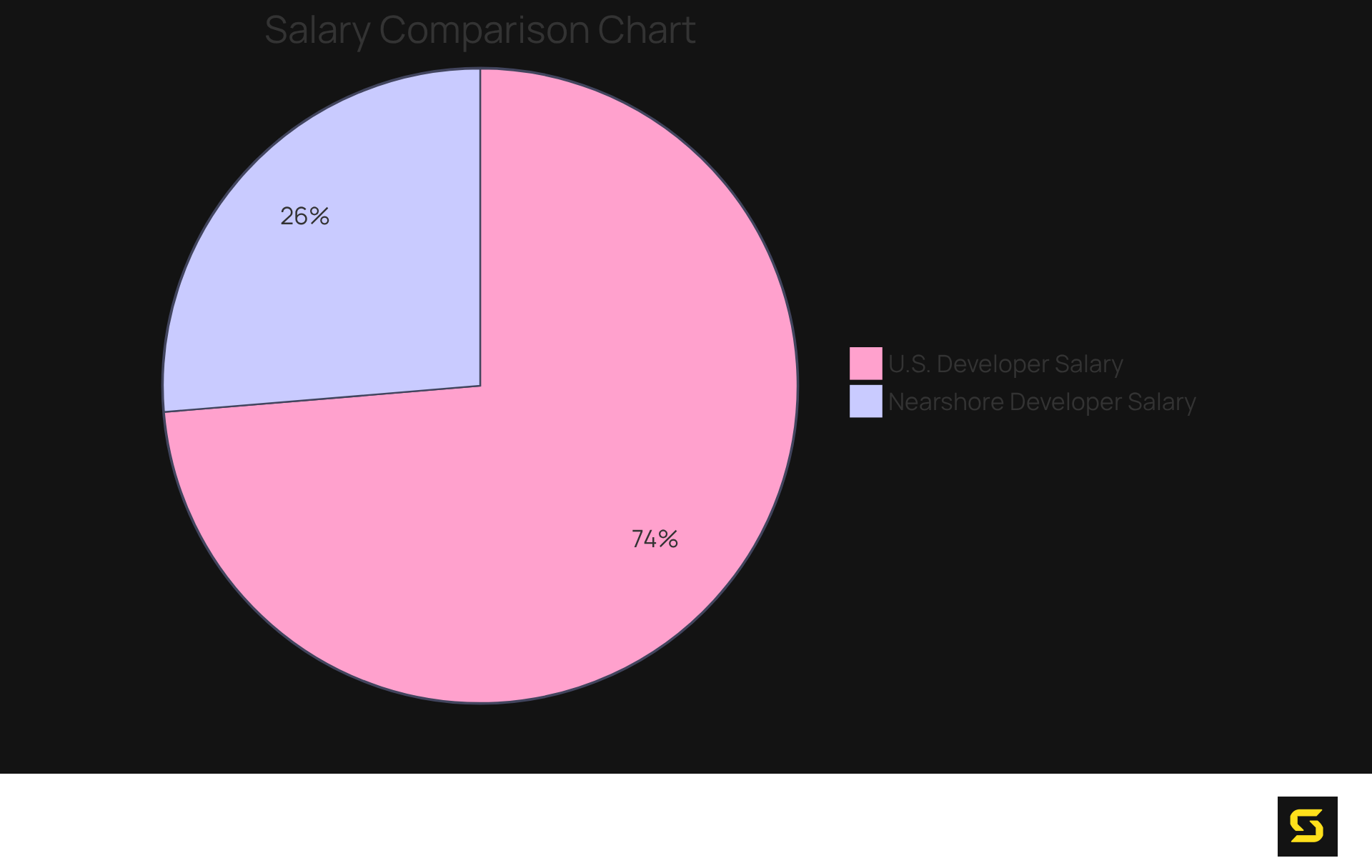
Revelo: Access to Top Talent in Nearshore Software Development
Revelo provides unparalleled access to , enabling companies to identify the ideal developers for their projects. This connection to not only elevates the quality of the software produced but also ignites innovation and creativity within teams. By leveraging a diverse talent pool, organizations can effectively utilize to construct that align with market demands. Embrace this opportunity to and .
Fingent: Enhancing Communication in Nearshore Development
Fingent significantly enhances communication in offshore projects by fostering . With and cultural affinities, local teams communicate more effectively than their offshore counterparts. This leads to quicker decision-making, reduced misunderstandings, and ultimately, a more —an essential factor for the success of . By prioritizing these elements, Fingent not only streamlines operations but also sets the stage for .
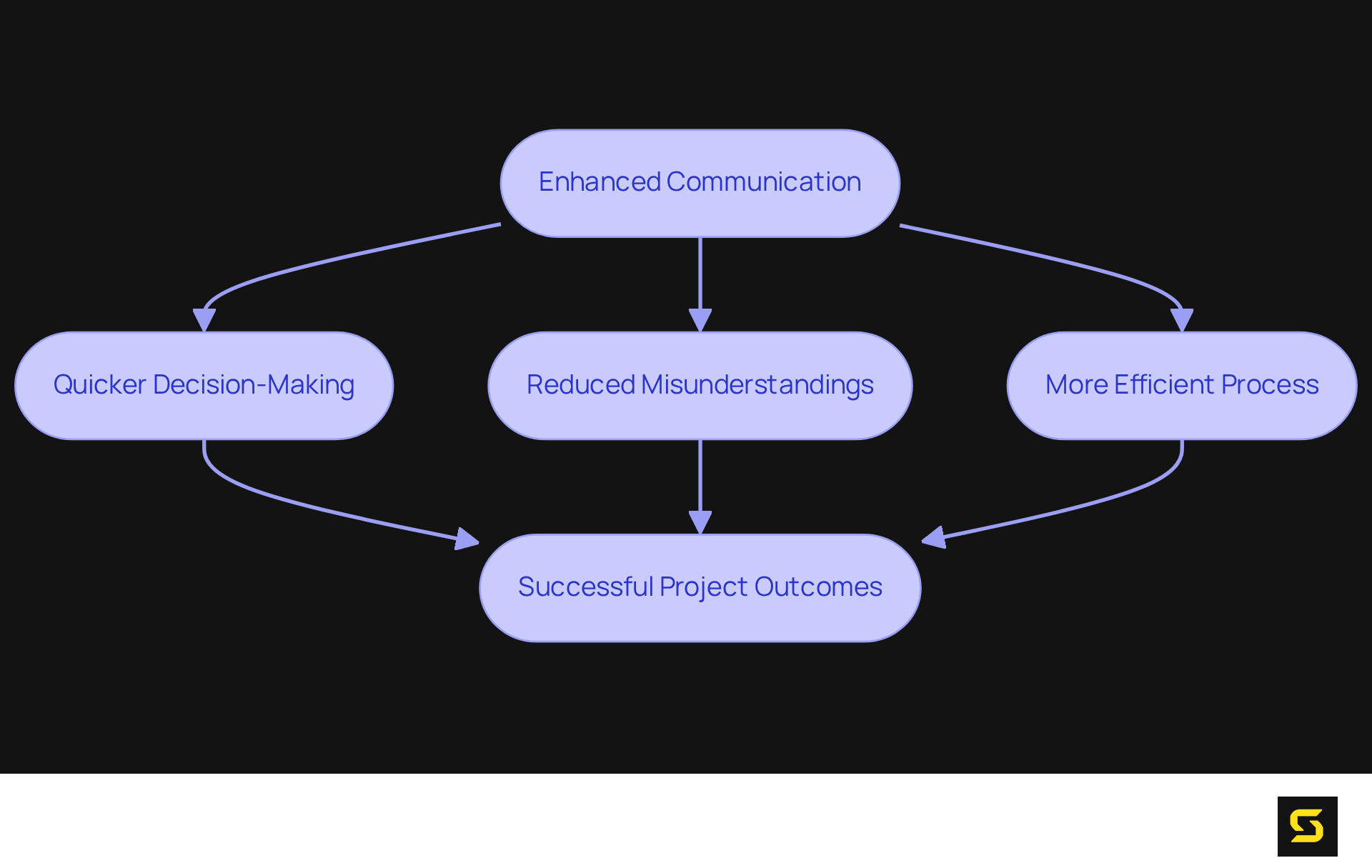
Flatirons: Scalable Nearshore Development Solutions
Flatirons provides that empower businesses to adjust their resources according to task requirements. This adaptability is vital for , which frequently encounter fluctuating user bases and evolving project scopes. By leveraging nearshore with nearby teams, organizations can swiftly amplify their project efforts, ensuring they remain agile and responsive to market dynamics.
Industry reports reveal that the global IT outsourcing market was valued at USD 565.2 billion in 2022 and is projected to experience significant growth by 2031, underscoring the increasing dependence on . As David Ho aptly notes, ' plays a crucial role in the smooth execution of initiatives,' which underscores the importance of effective collaboration in .
This flexibility not only enhances success but also enables companies to , ultimately fostering innovation and growth. Nevertheless, it is imperative for companies to implement to navigate potential challenges and ensure seamless integration with their existing teams.
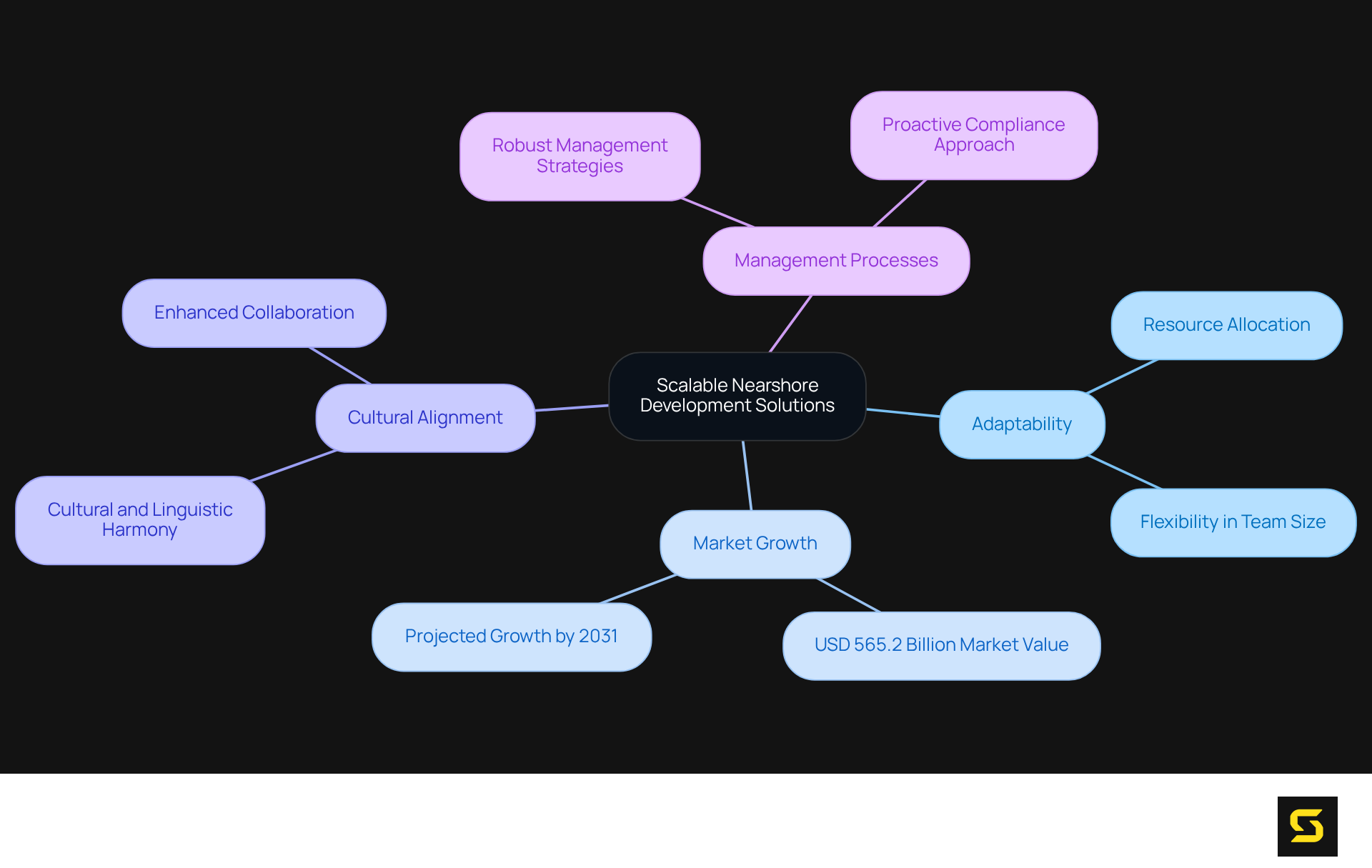
Pulsion: Promoting Cultural Compatibility in Nearshore Projects
is paramount to the success of initiatives, particularly within the . Collaborating with teams that share similar cultural backgrounds significantly enhances and minimizes conflicts. This alignment not only fosters but also leads to smoother interactions and a more harmonious working environment. As a result, initiatives benefit from improved cooperation, which is crucial for .
Team leaders consistently emphasize that and strengthens relationships, ultimately propelling the success of SaaS initiatives. In this context, prioritizing cultural compatibility is essential for delivering through nearshore application development that meet client expectations.
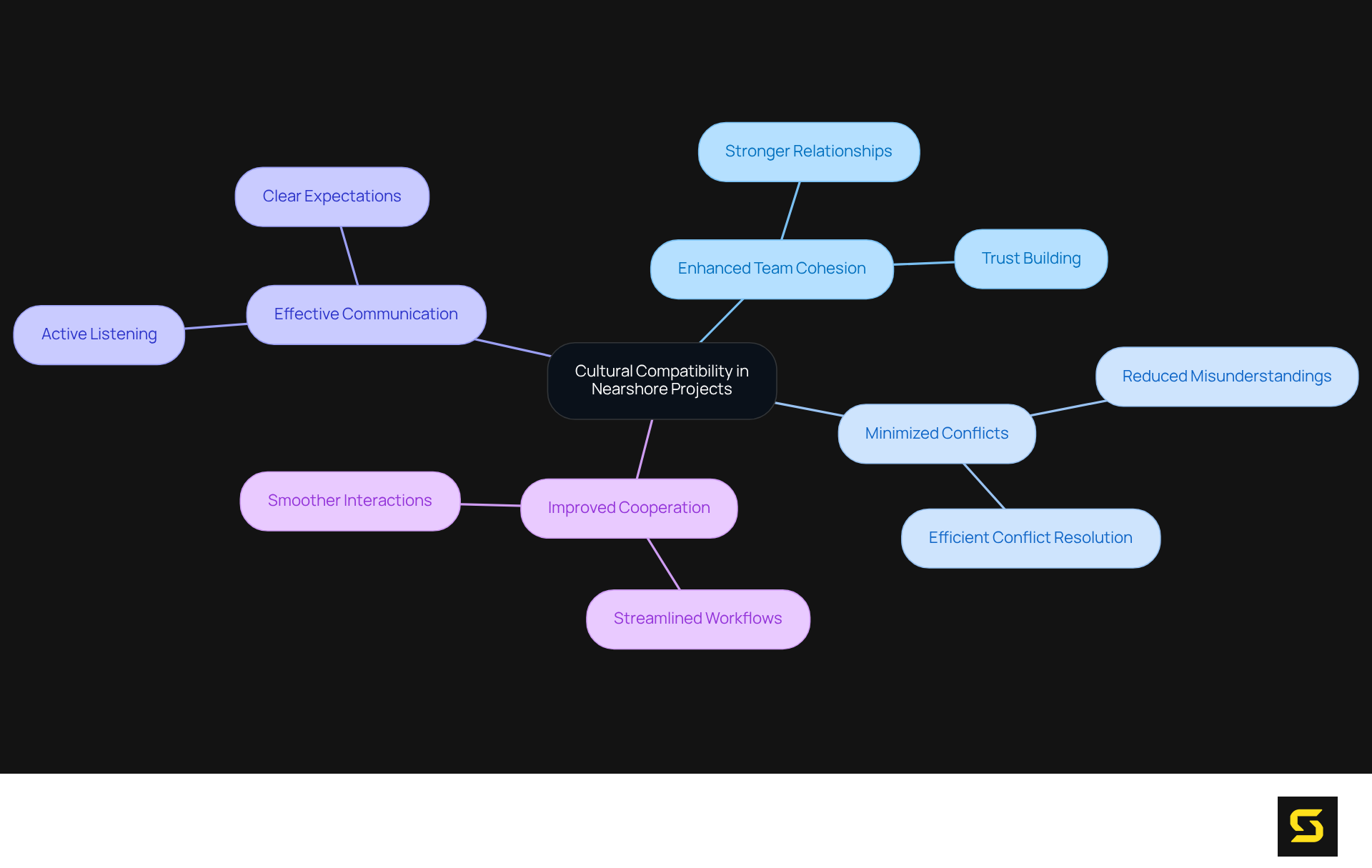
Hatchworks: Accelerating Project Delivery with Nearshore Teams
Hatchworks harnesses the capabilities of nearby teams in to dramatically accelerate , empowering businesses to launch their with remarkable speed. By capitalizing on the geographical proximity of nearby developers, organizations can enhance their nearshore application development processes, effectively .
This swift execution is vital for that must quickly adapt to and user feedback. Firms that engage nearby development report delivery times that are 30-50% faster, while also experiencing fewer instances of scope creep and change orders, which can reduce risk and timelines by as much as 20%.
Moreover, the and shared working hours between teams involved in nearshore application development and their U.S. counterparts promote seamless communication, and mitigating the risk of misunderstandings. Nearshore application development teams benefit from synchronized working hours, which leads to improved efficiency in management and issue resolution.
Consequently, software-as-a-service providers can achieve a for their solutions, ensuring they remain competitive in a rapidly evolving digital landscape. To fully leverage these advantages, SaaS product owners should consider into their project strategies, harnessing the speed and agility it offers.
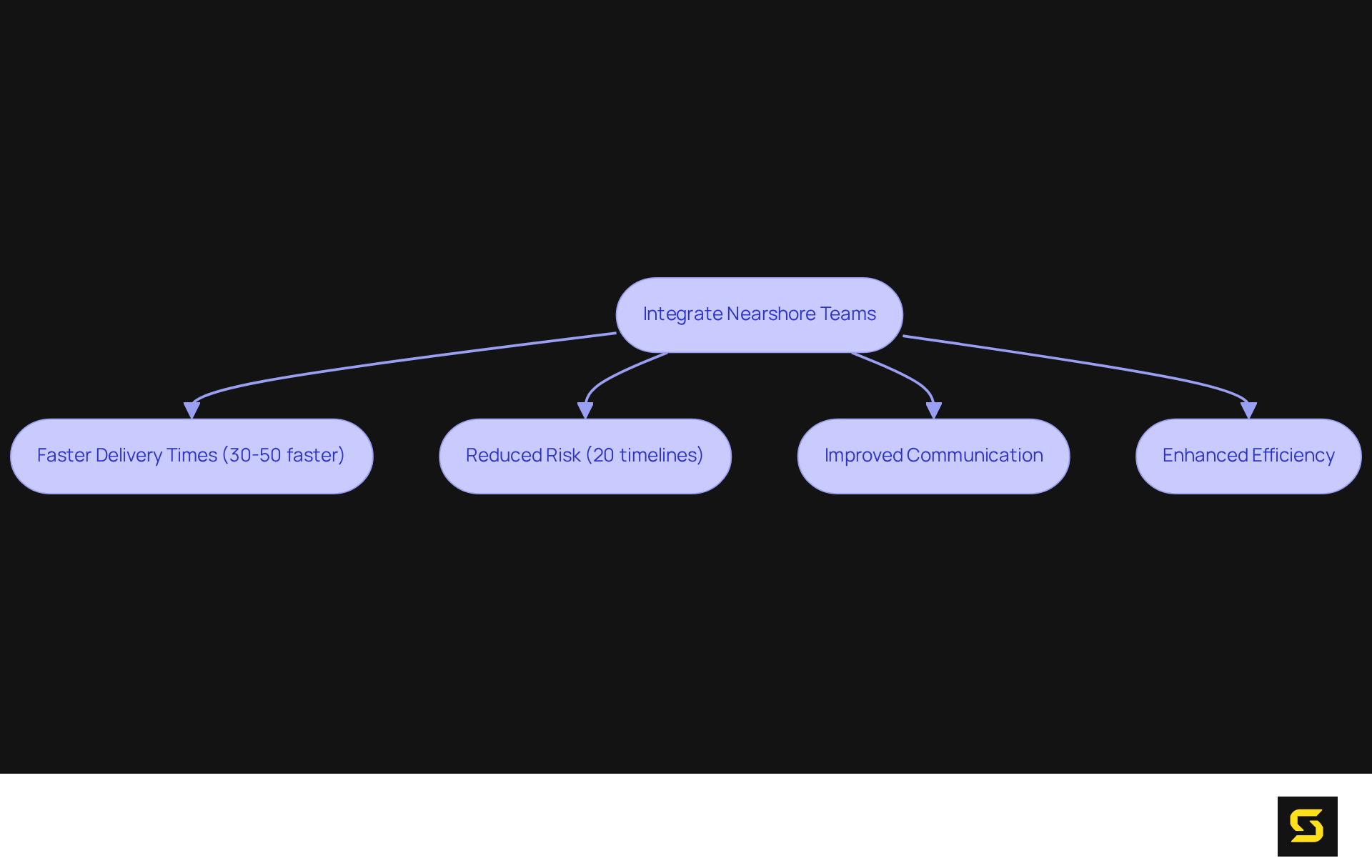
Eluminous Technologies: Ensuring Quality in Nearshore Development
prioritizes quality in offshore development through rigorous testing and . By adhering to industry best practices and standards, teams deliver software solutions that not only meet but often exceed client expectations. This unwavering is vital for SaaS companies, where drive success.
Effective quality assurance practices, such as continuous integration and regular code reviews, ensure that potential issues are identified and resolved early in the creation cycle. As Bhaval Patel, Director of Operations at Space-O Technologies, emphasizes, 'To ensure quality control with nearshore application development, make sure you maintain clear expectations and communication.'
Furthermore, successful demonstrate that comprehensive testing significantly enhances user experience, leading to increased retention rates and decreased churn. For instance, a US-based software company reduced its churn rate by fifty percent due to a UX modification suggested by their offshore partner during sprint reviews.
By fostering a , [SDA](https://sda.company) empowers its clients to achieve their business goals while maintaining a competitive edge in the market.
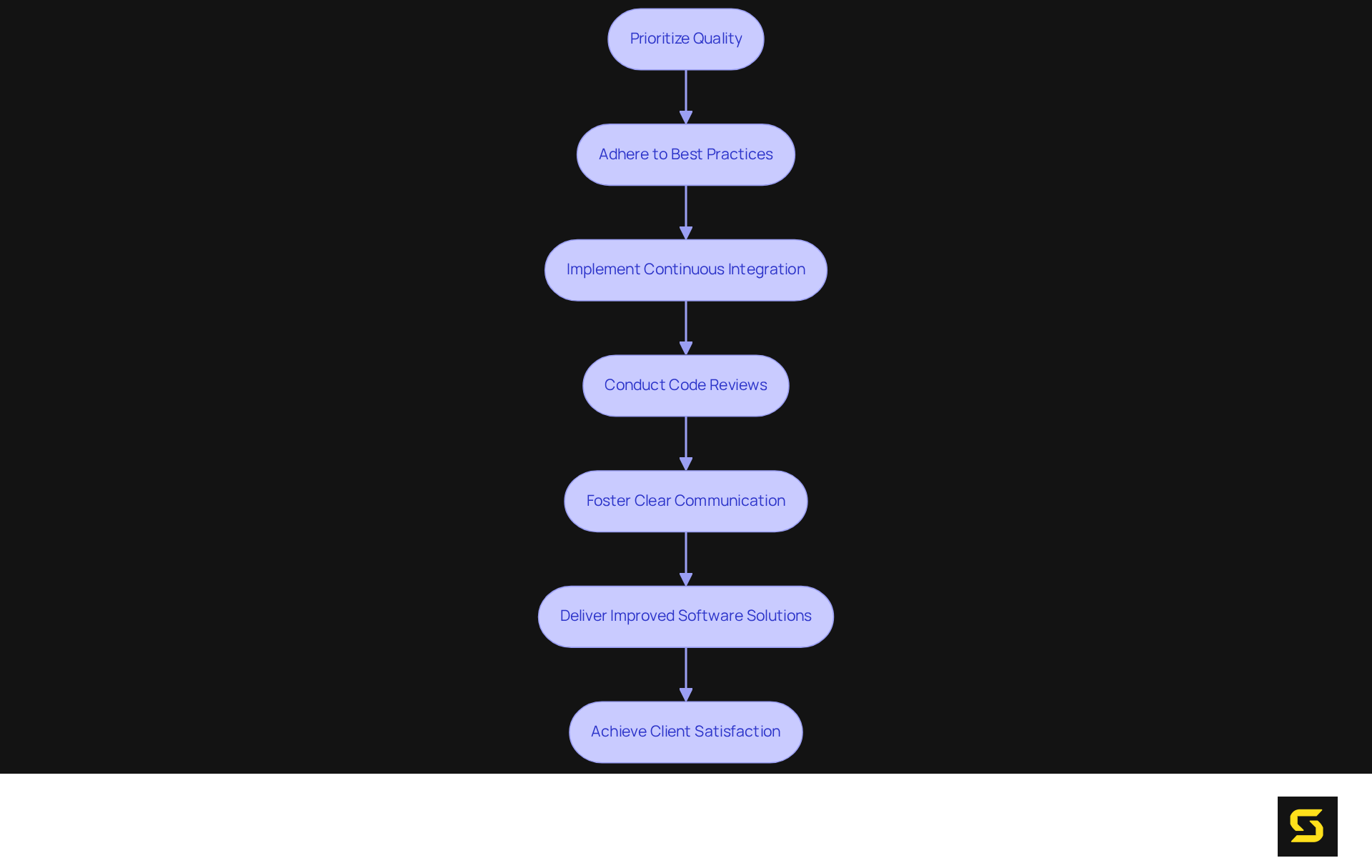
Uptech: Flexible Project Management in Nearshore Development
In coastal project management, play a crucial role in providing , empowering companies to adjust their strategies as projects evolve. This flexibility is especially beneficial for firms, which often need to pivot based on user feedback or shifting market dynamics.
By implementing agile practices, local teams can stay aligned with client objectives, ensuring that processes remain responsive and effective. This approach not only enhances outcomes but also fosters a , enabling teams to iterate rapidly and deliver through that meet the changing demands of the software-as-a-service landscape.
Moreover, the allows software-as-a-service firms to manage their finances effectively while capitalizing on the advantages of agile methodologies. are critical for successful collaboration, facilitating and swift decision-making.
As agile coach David Ho aptly notes, 'Clear communication facilitated by shared language and cultural contexts helps in setting realistic expectations and achieving project milestones effectively.' This cultural compatibility further enhances collaboration, making nearshore application development an attractive option for software companies.
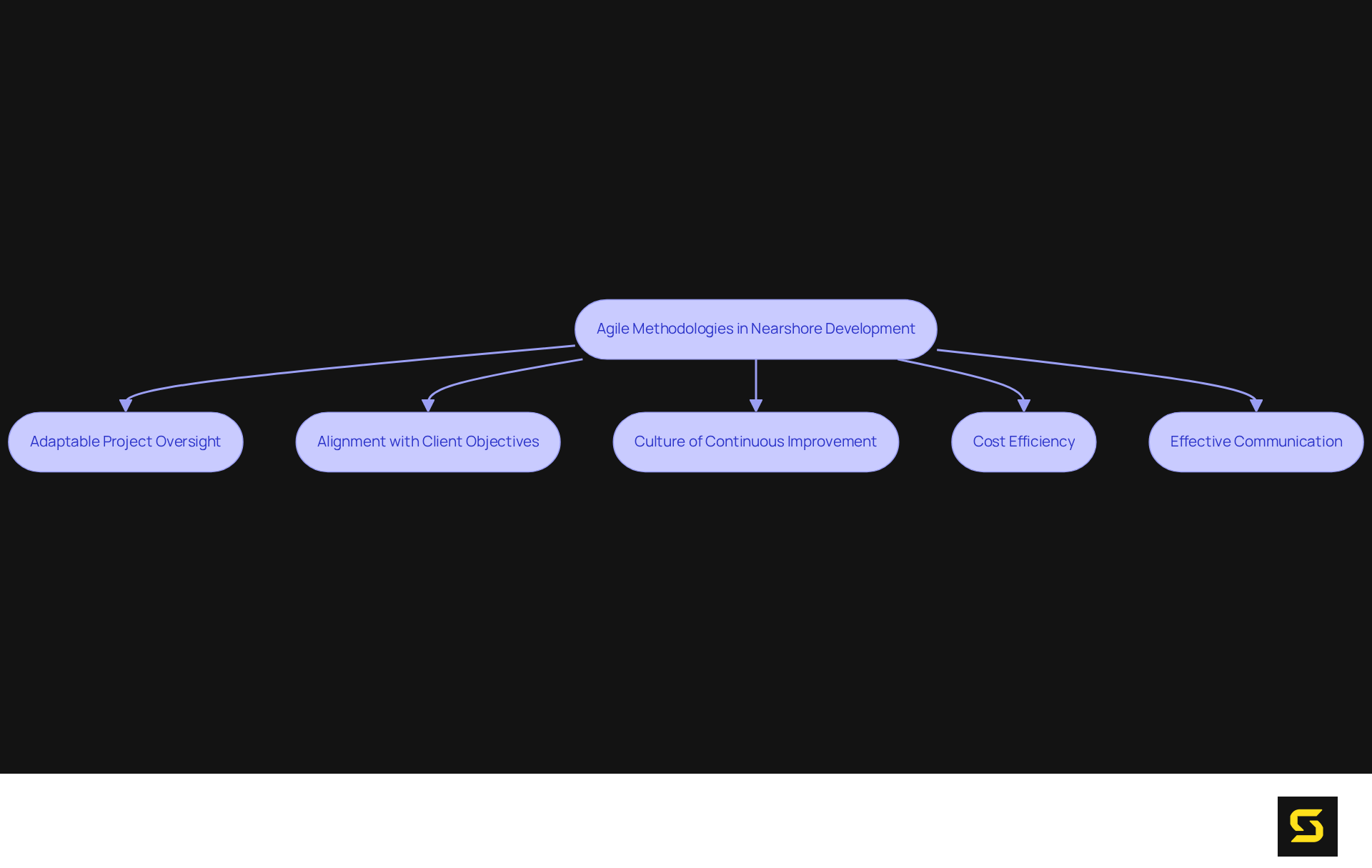
OSSISTO: Enhancing Operational Efficiency through Nearshore Development
OSSISTO significantly enhances for through regional development, optimizing workflows and minimizing overhead expenses. By leveraging nearshore teams, organizations can streamline their processes, leading to heightened productivity that enables them to focus on innovation and growth. This operational efficiency not only translates into substantial but also empowers software companies to respond swiftly to market demands, thereby strengthening their competitive edge.
As operational leaders assert, 'Implementing , like Scrum or Kanban, fosters teamwork and adaptability to immediate changes,' which is crucial for aligning teams with strategic goals. Furthermore, between regional teams and software-as-a-service firms bolsters communication and collaboration, ultimately driving successful outcomes.
The impact of these optimized processes is evident in numerous successful that have effectively utilized from nearby regions, demonstrating how reduced overhead expenses facilitate rapid growth and improved service delivery.
Industry insights reveal that nearshore application development projects can range from $30,000 to $100,000, presenting a for businesses seeking to enhance their operational capabilities.
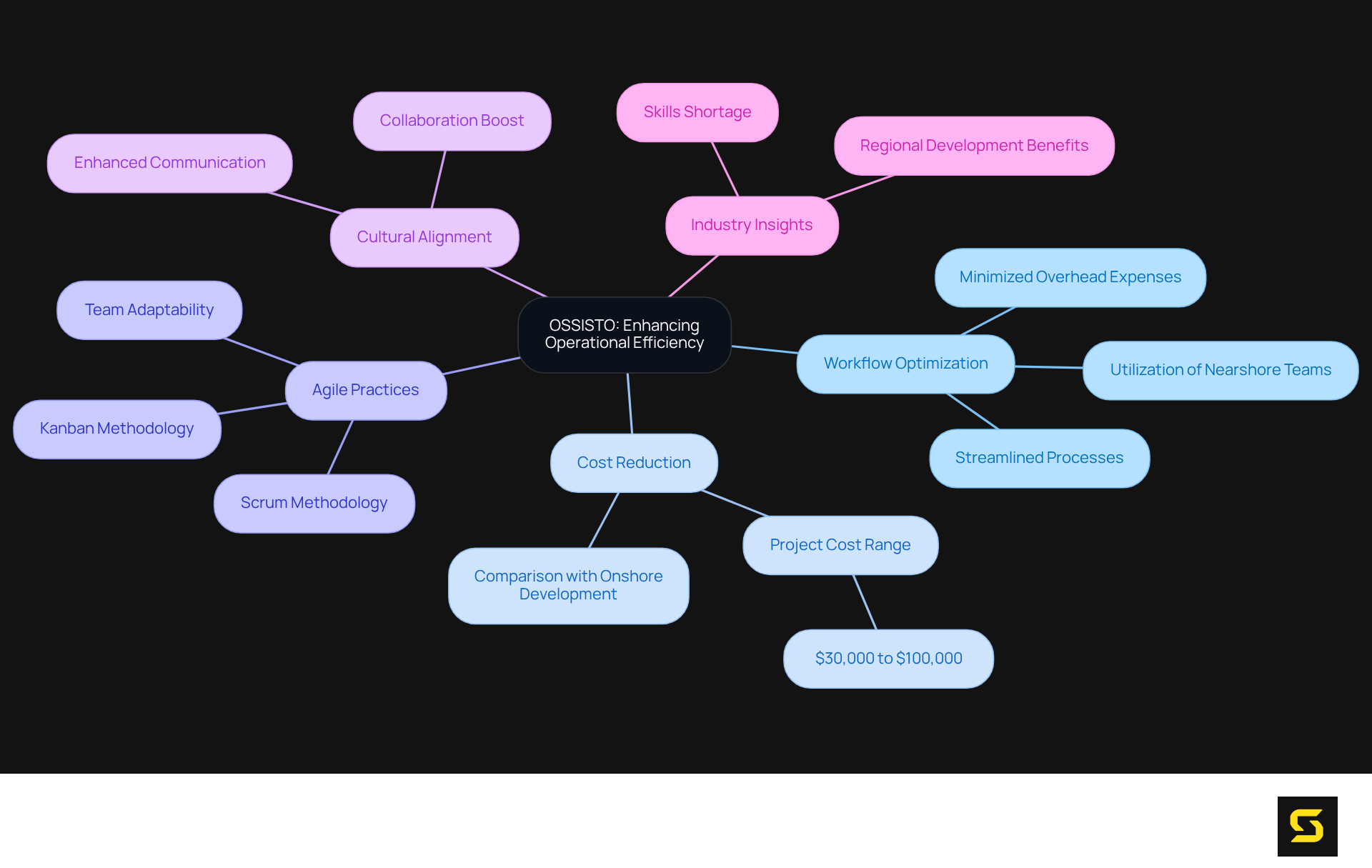
Conclusion
Nearshore application development offers a strategic advantage for SaaS companies aiming to enhance their operational capabilities and achieve sustainable growth. By leveraging nearby talent pools, businesses gain access to high-quality software solutions while enjoying cost savings, improved communication, and cultural alignment. This approach not only accelerates project delivery but also fosters innovation and collaboration—key elements for success in the competitive SaaS landscape.
Several pivotal benefits of nearshore development stand out. These include:
- Access to a diverse talent pool
- Significant cost reductions compared to onshore development
- Enhanced communication facilitated by aligned time zones
- The ability to scale resources according to project demands
Moreover, the emphasis on quality assurance and agile methodologies ensures that software solutions not only meet but exceed client expectations, ultimately leading to higher user satisfaction and retention rates.
In conclusion, embracing nearshore application development is not merely a cost-effective solution; it is a transformative strategy that empowers SaaS companies to innovate, adapt, and thrive in a rapidly changing market. By prioritizing tailored solutions and fostering strong partnerships with nearshore teams, organizations can enhance their operational efficiency and drive their projects toward success. The time to explore the advantages of nearshore development is now, as it holds the key to unlocking a brighter future for software-as-a-service initiatives.
Frequently Asked Questions
What is SDA and what services do they offer?
SDA specializes in tailored nearshore application development solutions that cater to the unique needs of various industries, ensuring projects align with clients' strategic objectives to enhance software effectiveness.
How does SDA's approach benefit clients?
SDA's personalized approach improves user experience and propels business growth, making them a trusted partner for organizations looking to innovate in the software as a service sector.
What trend is highlighted in the 2025 Nearshore Report?
The 2025 Nearshore Report emphasizes the growing trend of nearshore application development across industries, highlighting the need for bespoke software solutions to foster collaboration and yield measurable results.
How does SDA leverage talent in LATAM?
SDA taps into the skilled workforce in LATAM to enhance engineering capacity, allowing clients to quickly respond to market demands and technological advancements.
What cost advantages do SaaS product owners gain by working with SDA?
By utilizing lower labor costs in LATAM, SaaS product owners can maintain high delivery standards while optimizing their budgets.
What services does Cleveroad provide?
Cleveroad offers cost-effective nearshore application development services that provide businesses with high-quality software solutions at reduced expenses compared to onshore development.
How much can companies save by using Cleveroad's services?
Companies can achieve operational cost reductions of 30-40% by leveraging skilled developers in nearby regions.
What is the salary difference between U.S. and Latin American developers?
A senior software engineer in the U.S. earns between $120,000 to $160,000 annually, while a comparable developer in Brazil or Colombia earns between $40,000 to $60,000, showcasing substantial savings through nearshoring.
What advantages does nearshore development offer regarding collaboration?
Nearshore development fosters effective communication and collaboration due to cultural compatibility and slight time zone differences, leading to improved project outcomes.
What does Revelo offer to companies in need of software development?
Revelo provides access to top talent in software development, helping companies find ideal developers for their projects, which enhances software quality and ignites innovation within teams.
How does leveraging a diverse talent pool benefit organizations?
Utilizing a diverse talent pool through nearshore application development enables organizations to build robust SaaS solutions that meet market demands and enhance team capabilities.





